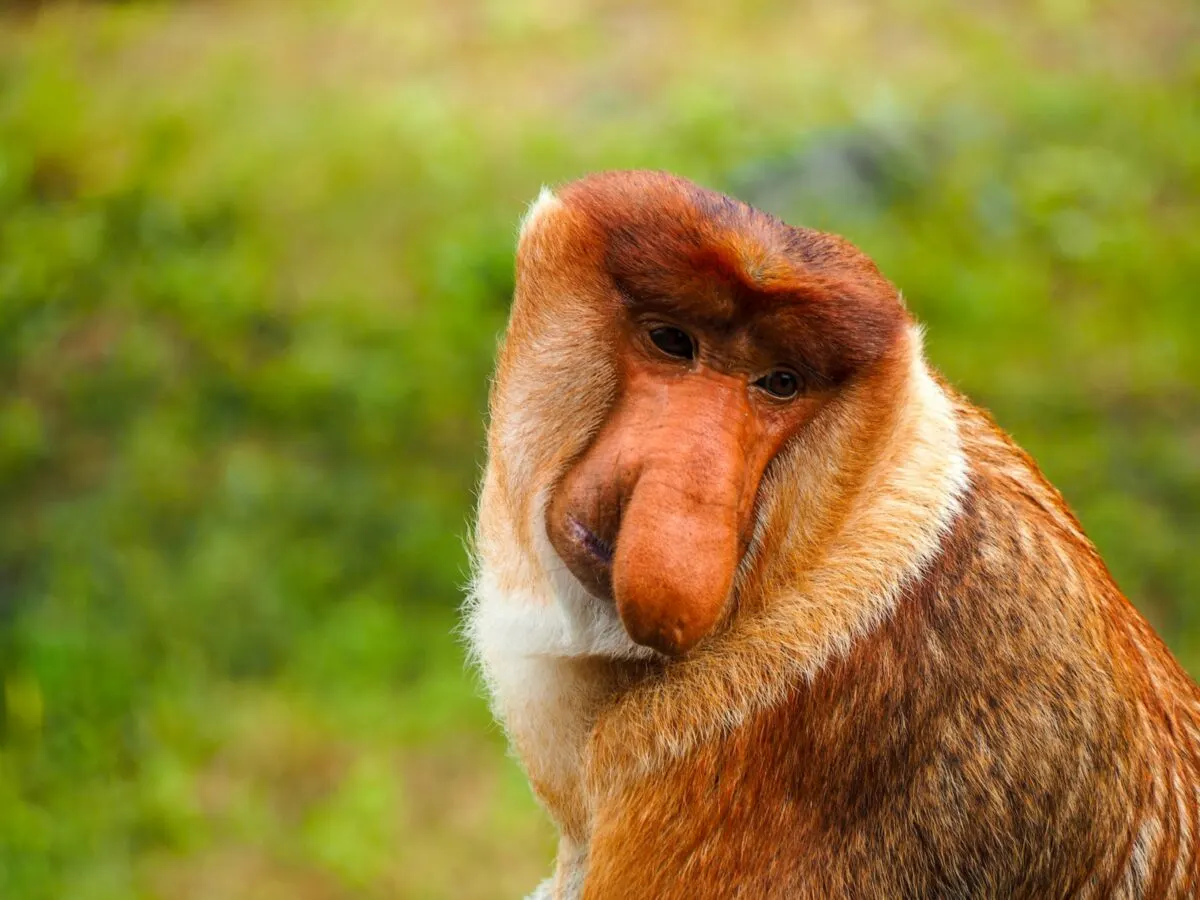Monkeys, those fascinating members of the primate family, come in various shapes and sizes, typically sporting long tails.
Alongside them, you’ll find macaques, baboons, guenons, capuchins, marmosets, and tamarins, all belonging to the primate order. Among these primates, there are two distinct groups: the New World monkeys and the Old World monkeys, totaling a remarkable 264 known species.
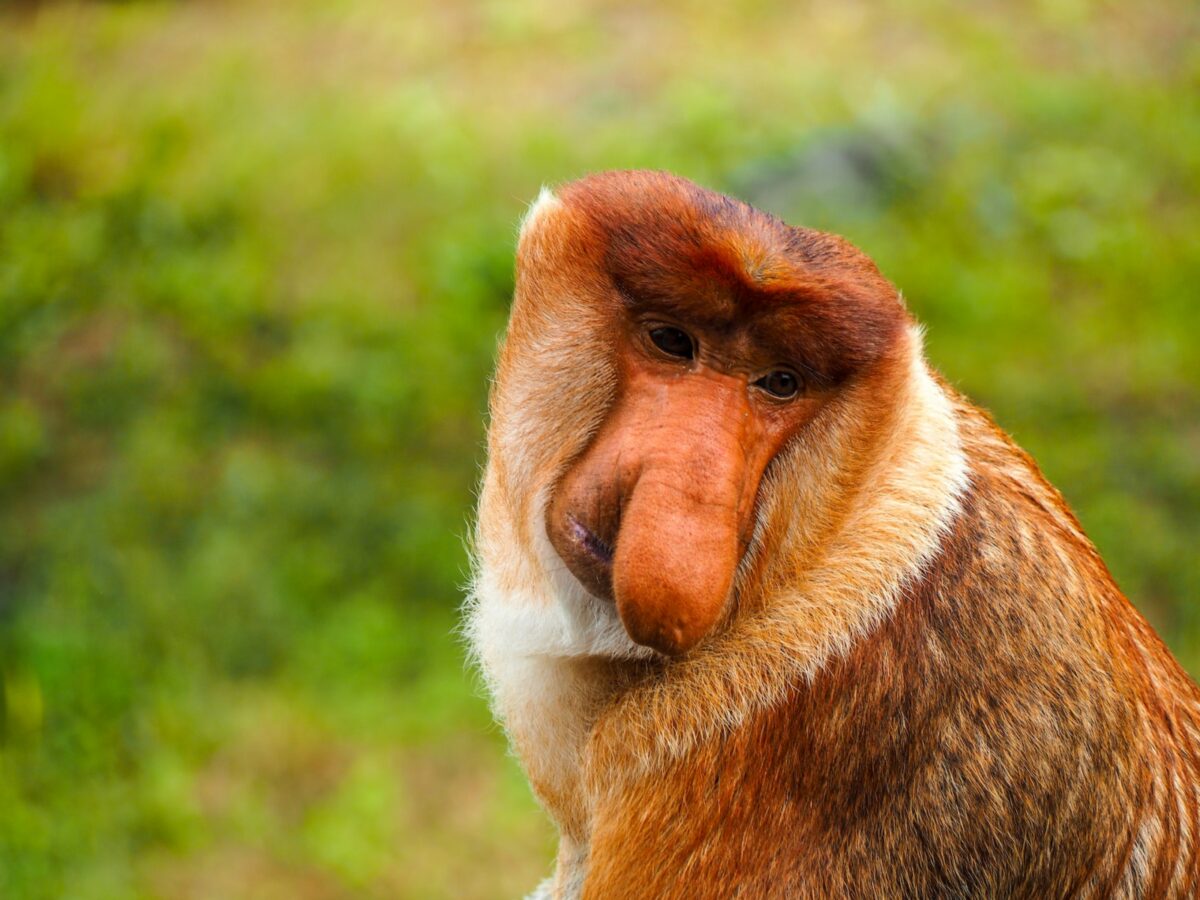
Now, let’s clear up a common misconception – chimpanzees and apes might resemble monkeys, but scientifically speaking, they’re not part of the monkey crew. One distinguishing feature is the tail; New World monkeys often flaunt prehensile tails, while their Old World counterparts usually lack this handy appendage.
When it comes to appearances, each monkey group has its unique facial characteristics, although there are some common traits that bind them together. As for size, it’s a vast spectrum, ranging from the petite 5 to 6-inch Pygmy Marmoset to the imposing adult male Mandrill, standing at a towering 3 feet. These primates have adapted to various habitats, with some calling treetops home while others roam savannas and grasslands.
Survival is their game, and most monkeys are flexible eaters, feasting on a menu that includes fruit, leaves, nuts, berries, eggs, and insects. On occasion, they even turn into skilled hunters, seeking out other small creatures to maintain their well-rounded diet.
Humans and Monkeys
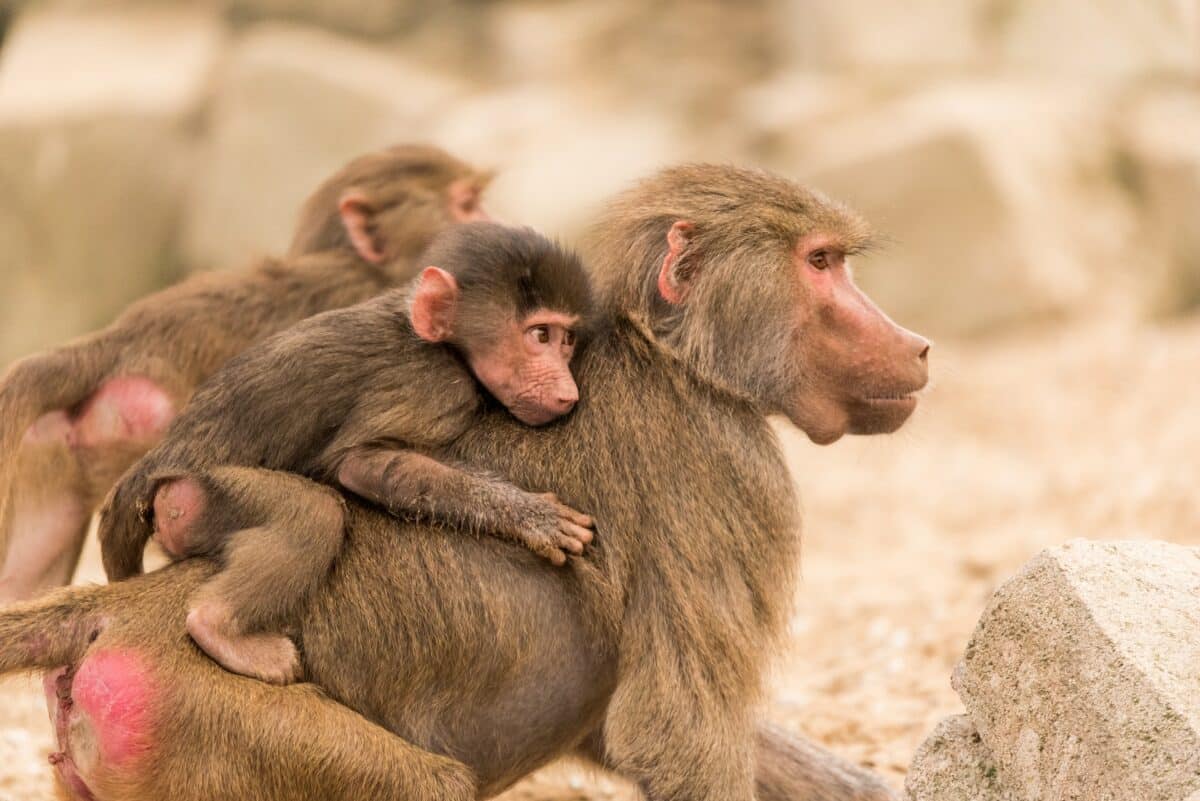
Humans and modern apes share a common ancestry with older iterations of ape-like animals. We diverged from a common ancestor millions of years ago, not from chimpanzees or gorillas, but rather in tandem with them. We chose the other fork in the road while they picked one.
Additionally, in terms of primates, humans are only a species of giant ape with no hair. Although humans are apes of a very particular sort, we are not descended from apes. For instance, we have 98 percent DNA in common with chimpanzees and bonobos.
Various Types Of Monkeys
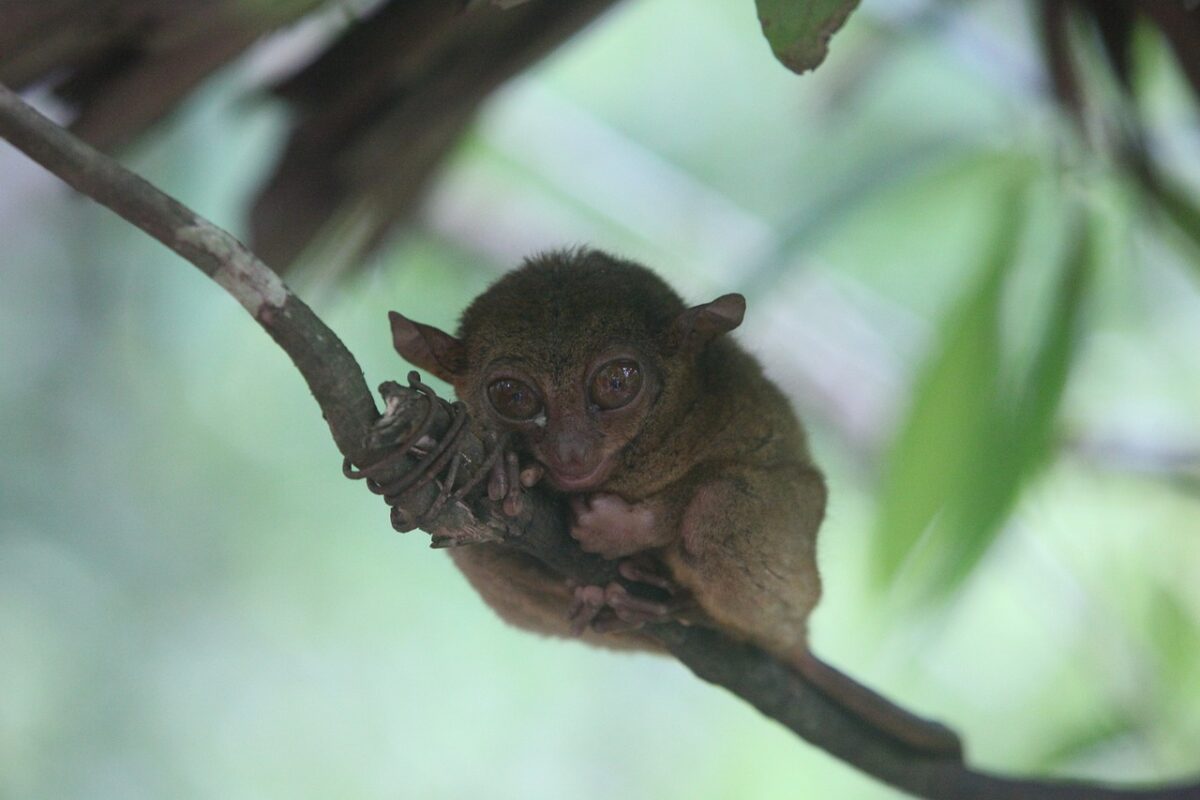
Old World monkeys and New World monkeys are the two main families of monkeys. According to Nature Education, Old World monkeys are found in Asia and Africa and have noses that point downward. The nostrils of New World monkeys, which are found throughout North and South America, point outward.
Each group has unique abilities. According to The University of Edinburgh in Scotland, some New World monkeys, like South American spider monkeys, have prehensile tails that they can use to grasp and hold tree branches and other objects. Meanwhile, many Old World monkeys have pouches in their cheeks where they can store food.
Monkeys have a diverse range of looks. For instance, male proboscis monkeys (Nasalis larvatus) from Borneo in Southeast Asia are renowned for having large noses. A 2018 study discovered that they utilize their noses to attract female partners, who prefer longer noses, according to a study published in the journal Science Advances. Their vocalizations are also improved by their big nostrils. Proboscis monkeys have pot bellied bodies and crimson cheeks. Their appearance contrasts starkly with that of several other species, such as the long, thin, and small-nosed black and brown spider monkeys.
Monkeys Considered the “Ugliest”
There are many different species of monkeys around the globe, but some of them have peculiar appearances. Some of them could even be regarded as unremarkable. Or, just plain ugly monkeys. Nevertheless, they are fascinating and merit more investigation. Let’s examine what makes these five monkeys the ugliest in the world. There is even an African Proverb, as quoted by Mohamed Folorunso, Freetown, Sierra Leone, on BBC, “African proverb: No matter how you fix a chimpanzee’s nose, it’s still ugly.”
#1 Bald Uakaris

The Amazon rainforest is home to a short-tailed monkey called the bald uakari. Their bald, scarlet cheeks and tufted white tails make these hideous monkeys simple to identify. Their red, hairless features may appear weird to us, yet they represent vigor and health. But it’s strange to see a monkey with long, shaggy fur and a bright red face.
Uakaris with bald heads are often relatively small, with a body length of approximately 12 inches. They range in weight from two to four pounds, with males often bigger than females. Because of the small blood veins on their faces that are so near to the skin, they are frequently referred to as “scarlet fever uakaris.”
Bald Uakaris are considered to be in a vulnerable position. Thankfully, there are already several conservation initiatives in action to help safeguard these unique species.
#2 Proboscis Monkey
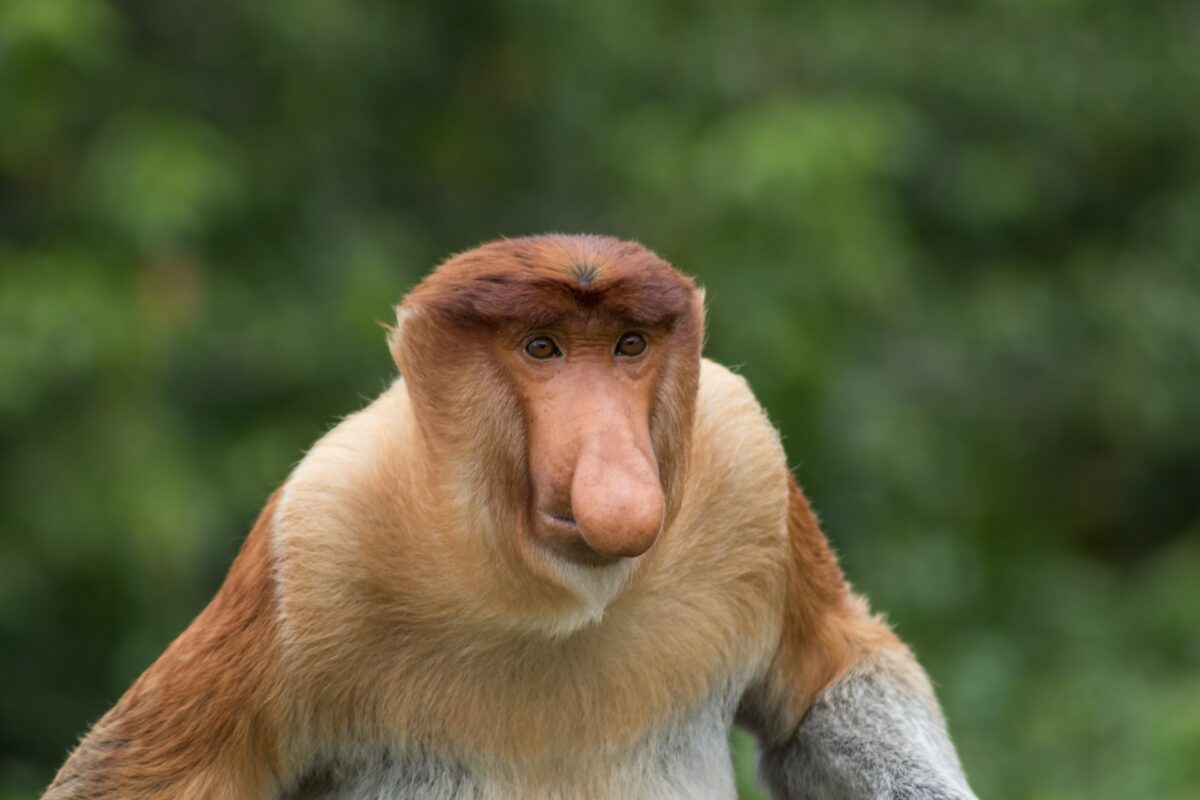
One of the oddest and ugliest-looking primates is the proboscis monkey. Its broad, bulbous snout makes it easy to identify. The male monkey’s nose, which may reach 7 inches, is used to entice females. Females, however, have significantly smaller noses. So even though we may think this monkey is unattractive, its own species undoubtedly find each other quite appealing due to their noses.
Borneo is the only place where proboscis monkeys naturally occur, and it is where they originate from. Frequently they dive into the water to elude predators and are good swimmers. They are found in swampy mangrove forests close to rivers. Their primary food sources are leaves, fruits, and seeds. Although the monkeys consume certain insects, they do not constitute a substantial portion of their diet. Only 2,000 to 5,000 wild proboscis monkeys are thought to exist still. Therefore, it is crucial to bring them into the spotlight and prevent the extinction of this species.
#3 Spider Monkey
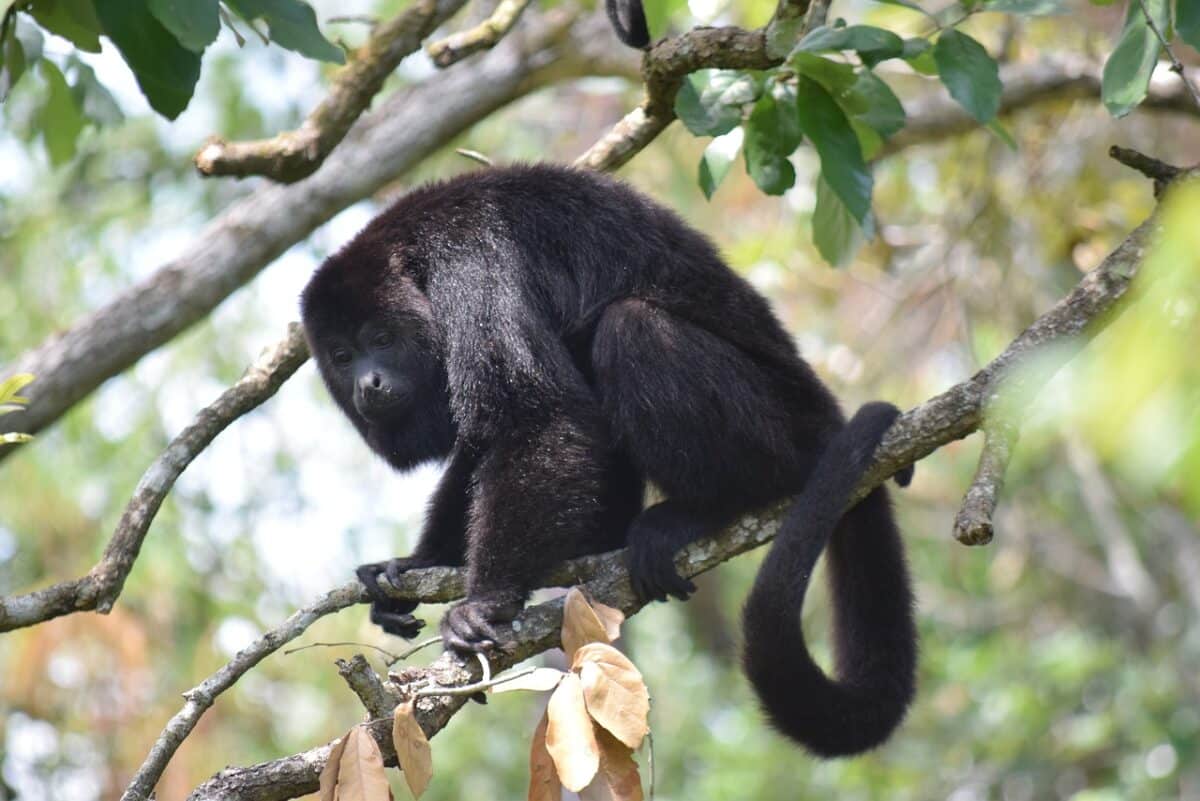
Although there are many strange-looking monkeys worldwide, spider monkeys may be the absolute strangest. They resemble aliens more than animals because of their long, slender, spider-like limbs and tail. But even though they may have an unsettling look, these peculiar tiny critters from South and Central America are fascinating. To begin with, spider monkeys are remarkably nimble, using their long tails as a fifth limb to effortlessly swing between trees. They are also one of the few monkeys that can walk on all fours and swing through the trees, making them equally at home on the ground as they are in the heights of the jungle. Although their physical prowess is remarkable, their intelligence is what makes them unique. Spider monkeys, for instance, use tools to itch themselves or to hunt for food.
There is no disputing that spider monkeys are magnificent animals, despite the fact that they may not be the world’s cutest.
#4 Red-Faced Spider Monkey
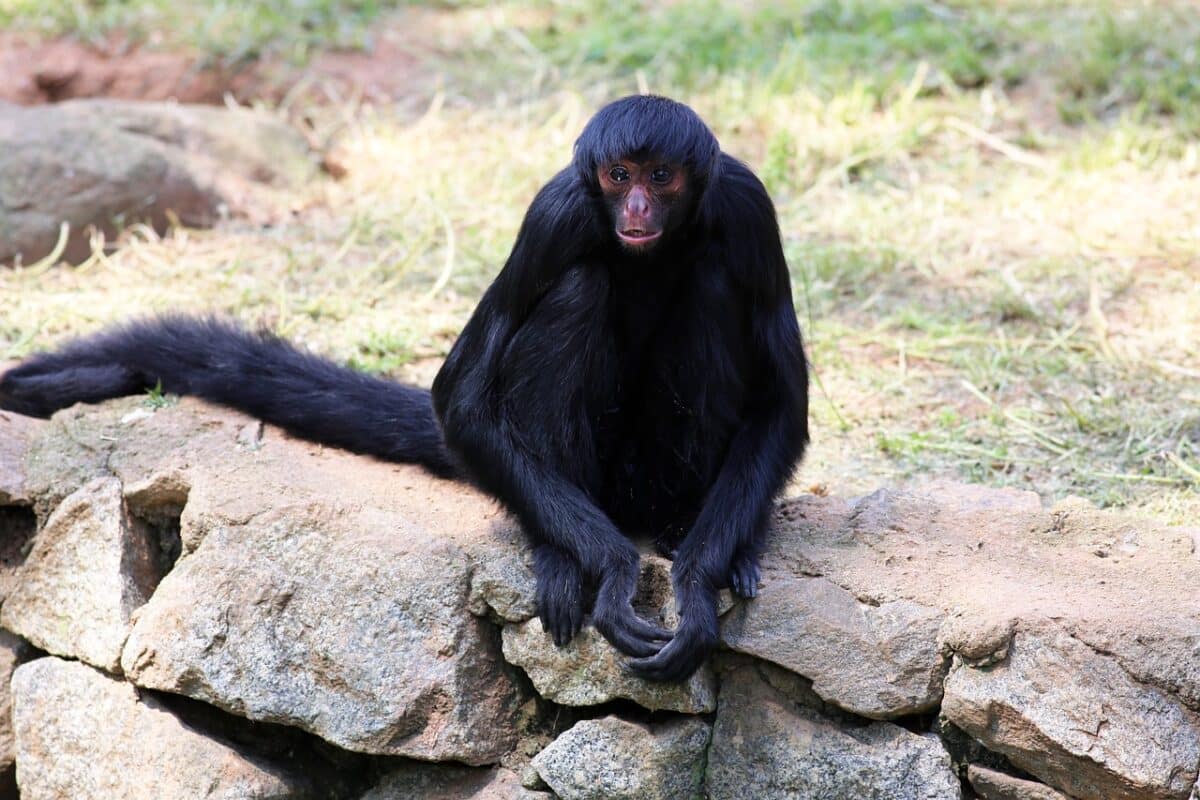
The red-faced spider monkey is ugly or may come across as bizarre-looking at the very least. It gets its name because of its long limbs and tail, which resemble those of a spider. The crimson face and peculiar limbs combine to create a creature that resembles an extraterrestrial, more so than a real monkey. Nevertheless, the odd appearance is more of a strength than a weakness.
The spider monkey is, first and foremost, nimble thanks to its limbs and tail, especially while swinging through trees. When grasping branches, the long, prehensile tail serves as a fifth limb. The spider monkey’s anatomy also has the benefit of allowing for effortless land movement. The spider monkey has a sophisticated mind underneath its odd appearance, which is a good trait. Its capacity for tool creation is one illustration of its intelligence.
#5 Tarsier
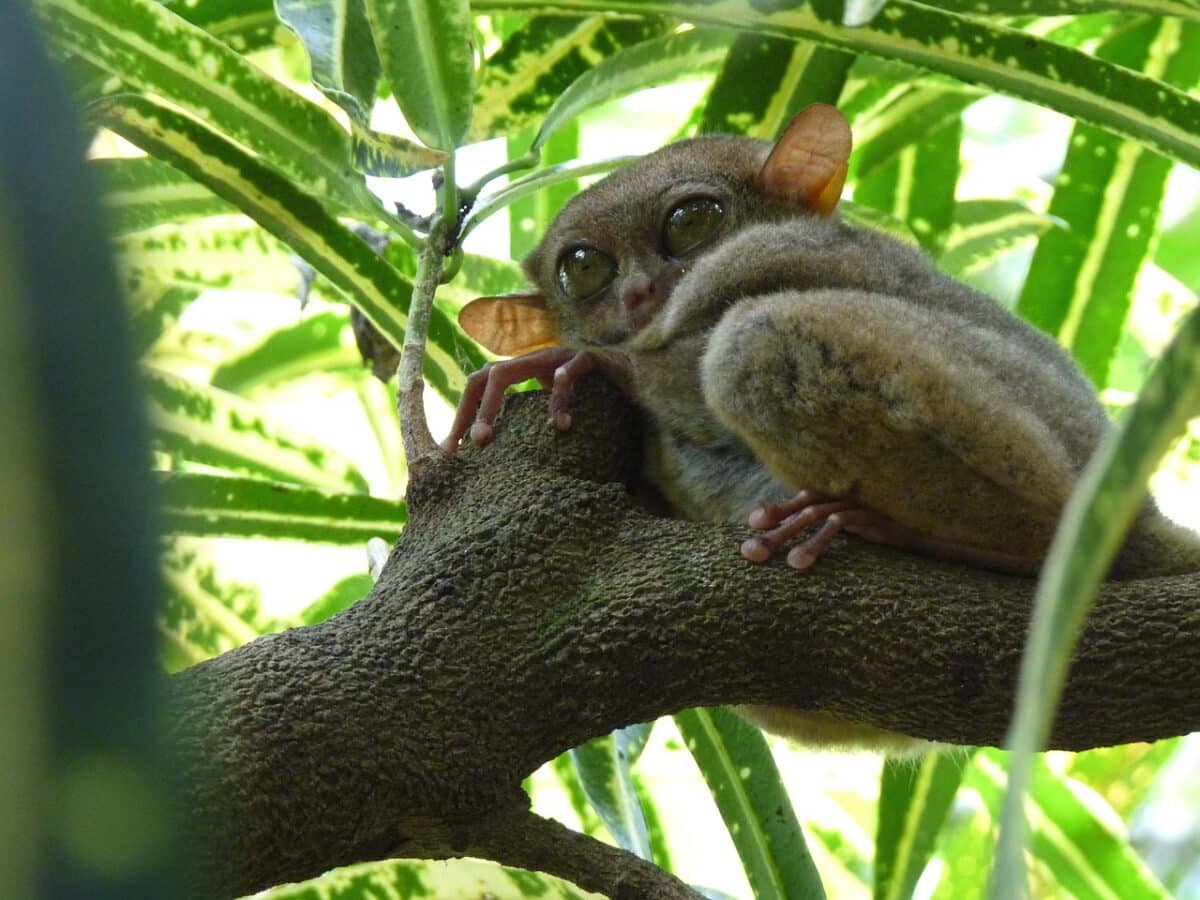
There are many species of monkeys around the world. Even though they all have their own distinctive qualities, some stick out more than others; one of the oddest-looking monkeys you cannot help but stare at with interest is tarsiers. Southeast Asia, including nations like the Philippines, Indonesia, and Malaysia, is home to these little primates. Because they are nocturnal creatures, tarsiers are most active at night. Due to the majority of their food being insects, they are also one of the few entirely carnivorous monkeys in the world.
Tarsiers may appear to be tiny, but their eyes are extremely huge. Since their eyes are so large, around 75% of their head is taken up by them. Even though you may assume that these creatures’ enormous eyes would be a benefit, they actually find it rather challenging to see during the day. Tarsiers are, therefore, most active at night, when it is darker, and their eyes can adapt more quickly. Long legs are another characteristic of tarsiers – they can leap up to six feet in the air thanks to their muscular legs.
These are intriguing animals despite having odd and otherworldly appearances. So, the next time you encounter one, stop to notice all its distinctive qualities.
#6 Chacma Baboons
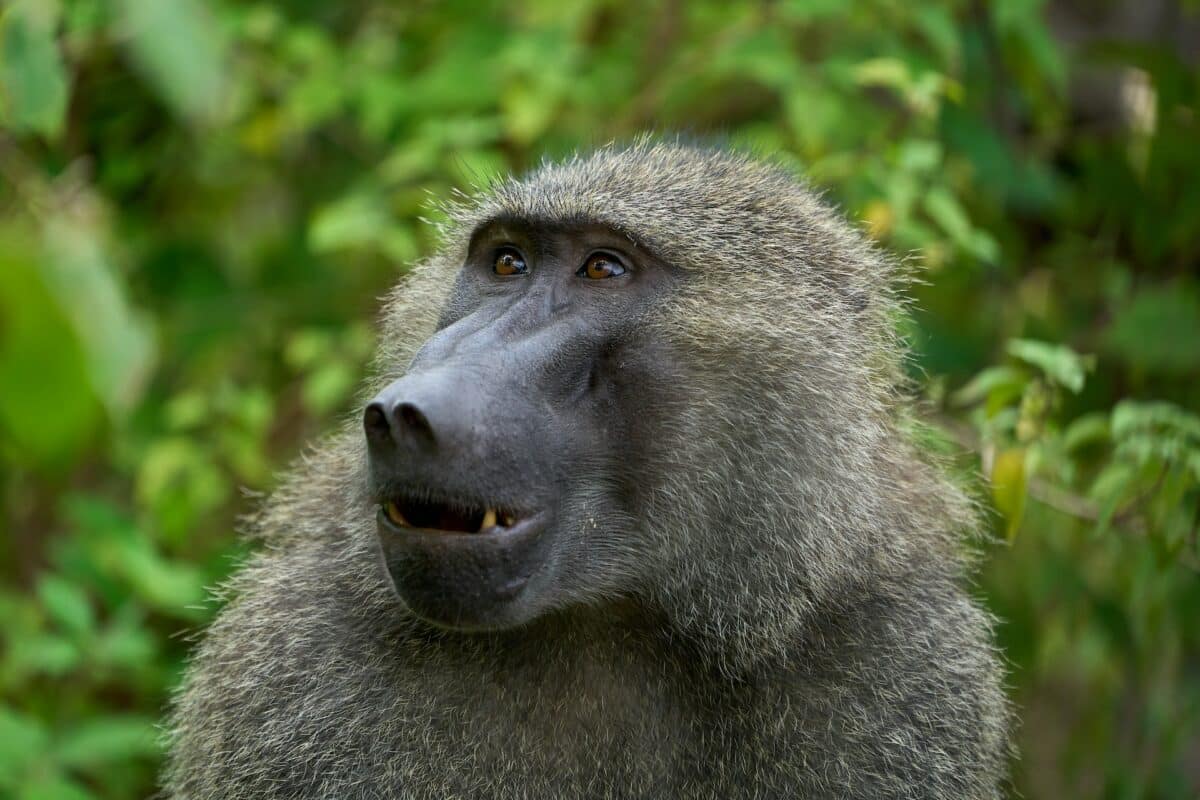
In the realm of Southern Africa, you’ll encounter a rather unique character known as the chacma baboon. Among baboon species, they might not win any beauty contests. While their mandrill relatives boast luscious fur and vibrant, colorful faces, the chacma baboons sport a rather plain brown coat that doesn’t exactly catch the eye. Their facial features, marked by sharp canines, sizable snouts, and angular contours, have earned them the not-so-flattering nickname of “dog-faced monkeys.”
Adding to their distinctive oddity, these baboons exhibit a rear end that can be either crimson or blue, a peculiar feature that leaves many scratching their heads. The reasons behind this colorful rear remain a subject of debate, with some suggesting it might be an attraction mechanism for potential mates, while others propose it could serve as a means of visual communication within their monkey society.
Regardless of the explanation, the chacma baboon’s appearance certainly places them among the contenders for the title of the world’s less conventionally attractive primates.
#7 Golden Snub-Nosed Monkey

Unlike the elephant seal’s proboscis and other animals, the snub-nosed monkey’s nostrils are all that can be seen. The golden snub-nosed monkey lives in regions with freezing winters and a lot of snow. They hang out in the forests and mountains, where the year-round temperature is between 43 and 45 degrees Fahrenheit (6-7 degrees Celsius), while the wintertime temperature is between 18 and 25 degrees Fahrenheit (-8 and -4 degrees Celsius). They are the only species of monkeys capable of enduring such chilly conditions. According to biologists, a more prominent nose would freeze in the cold. Let’s hope they occasionally blow their noises because if not, you’d see every booger.
#8 Hamadryas Baboon
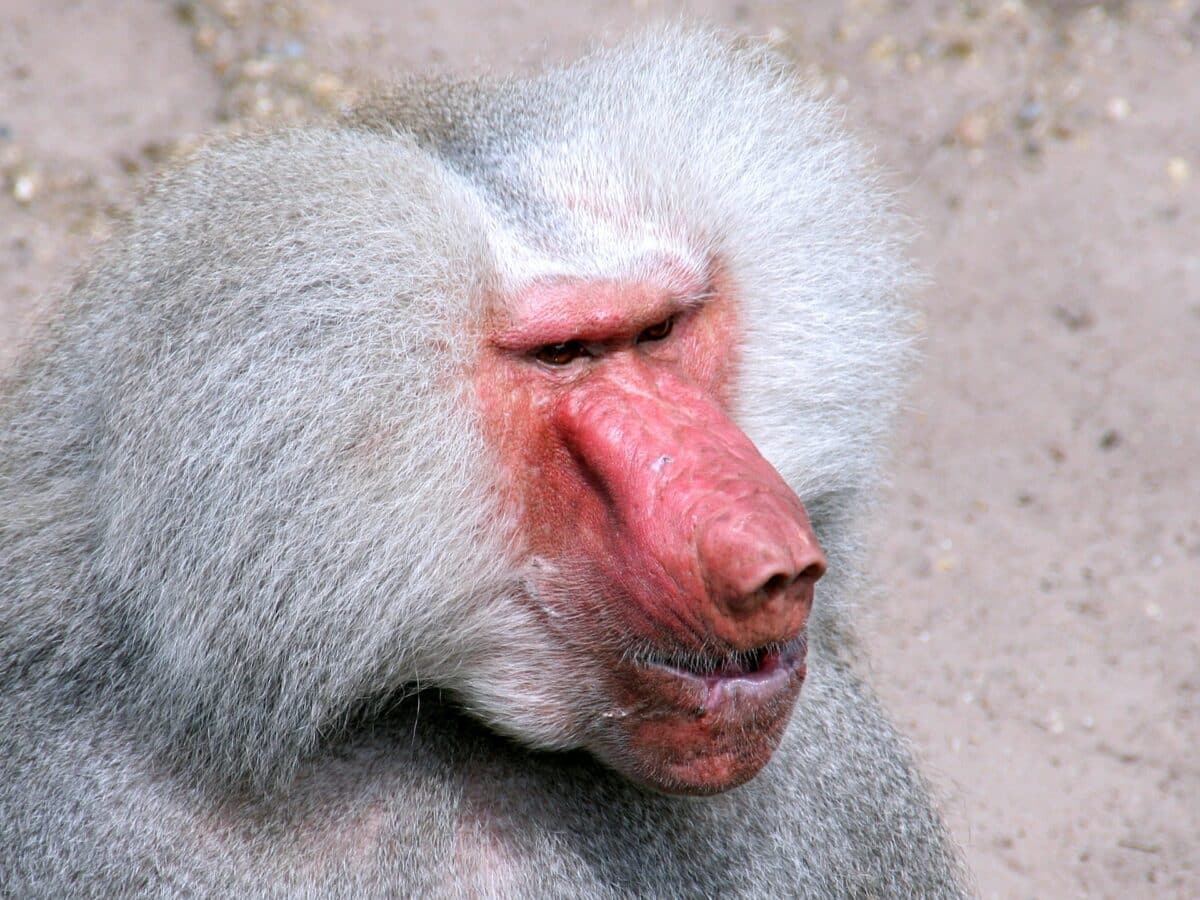
The baboon species known as hamadryas is indeed one the most vicious and repulsive. A male hamadryas baboon won’t put up with one of his females being lost or having feelings for another male. They respond by biting the female and making visible threats. Without a single leader, a troop of hamadryas baboons might number in the hundreds. Smaller groups can be formed inside the unit. One dominant male, his harem of females, their offspring, and young, low-ranking males make up each group.
They are from Somalia, Ethiopia, Djibouti, and Eritrea and reside in the Horn of Africa. Saudi Arabia and Yemen are also included in their range. They favor environments like savannas, rocky terrain, and dry grasslands. They constantly seek refuge in the security of the rocky cliffs. These baboons are omnivores. The time of year determines what plants they consume. During the dry season, they consume sisal and Dobera Glabra leaves. They consume flowers, grasses, roots, seeds, and the bark and leaves of acacia trees during the wet season when the soil is lush and alive. They will consume small animals, birds, insects, and reptiles throughout the year as well.
#9 Stump-Tailed Macaque
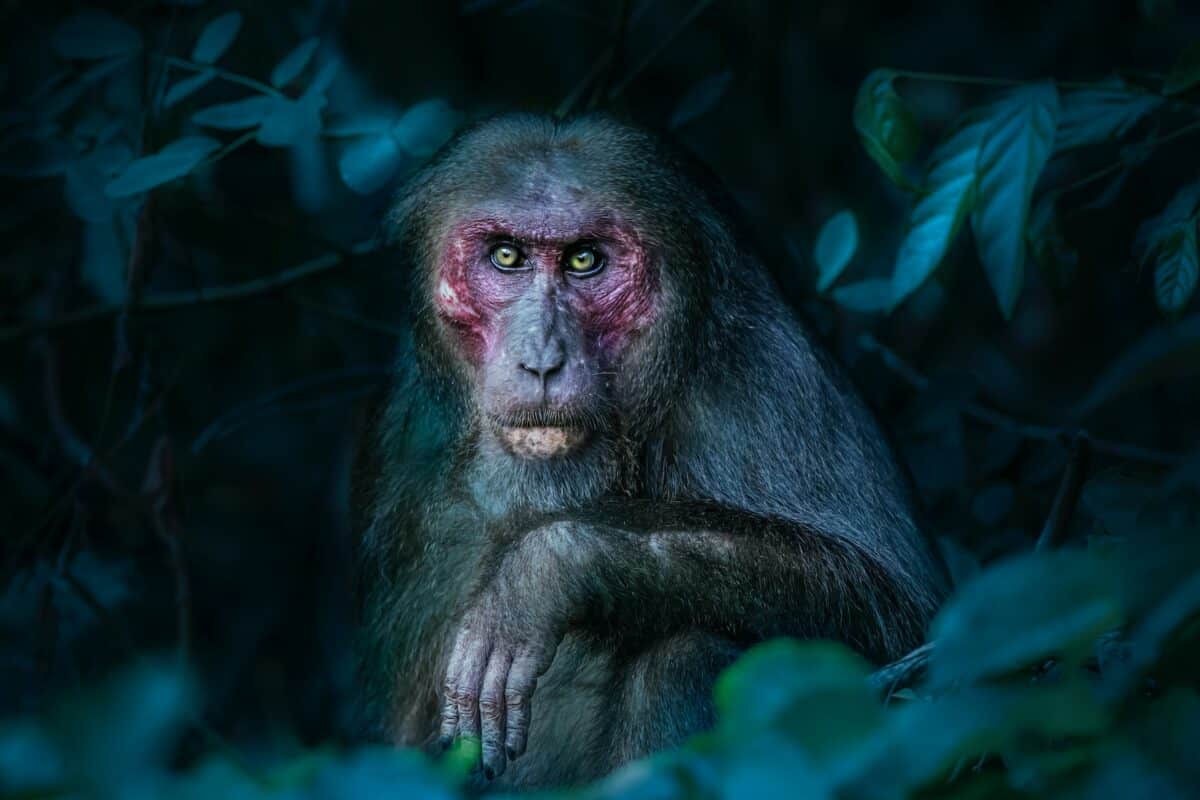
The bear macaque, also known as the stump-tailed macaque, has thick fur covering its body but is hairless on its face and has a stumpy tail. The reddish-pink face darkens with age and might eventually turn entirely black. They use cheek pouches to store food, the same as every other macaque species. Typically they reside in moist, evergreen woods in southern China, west Malaysia, Thailand, Vietnam, and the Malay Peninsula. The Himalayan area of northern India is home to the only population that does not reside in its natural forest habitat.
They differ from other macaques in having thick, muscular bodies that are better suited to life on the ground than climbing trees. Although fruit is a cornerstone of their diet, they eat more eggs, insects, and small animals than other macaques. They are calm primates, and when they act aggressively, it typically ends swiftly and without much fuss.
#10 Crab-Eating Macaque
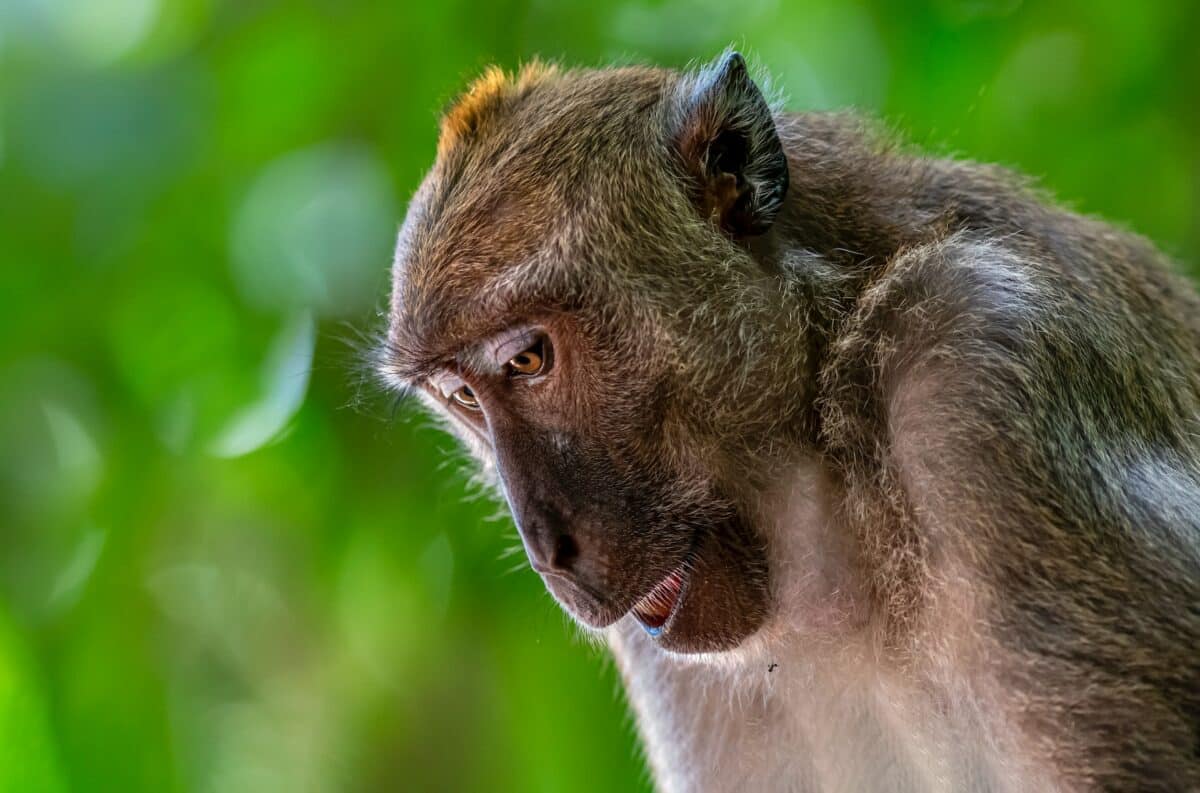
Crab-eating Southeast Asian-born macaques, sometimes referred to as long-tailed macaques, are primates. In the mangrove wetlands, they dive for crabs. They also consume fruits, seeds, bark, flowers, leaves, and roots. It has developed a bad habit; when the seeds are larger than 0,1 – 0,15 inches, they spit them out. They may avoid stuffing their stomachs with seeds they can’t digest in this way.
In addition to mangrove swamps, they also inhabit rainforests, coastal forests, shrubland, cities, and villages. They will grab food passively and forcibly in urban settings, making them a nuisance to the inhabitants.
How Memes Helped The “Ugly Monkeys”
New Polish research sought to provide light on how to pique people’s interest in saving species like the proboscis monkey, which aren’t very attractive. Researchers investigated whether sharing humorous online memes—pictures of the monkey with text relating its look to Polish jokes and cultural references—within social media and in conservation marketing increased public interest in protecting this strangely ugly primate. The scientists then compared public donations to relevant conservation projects to track the popularity of proboscis monkeys vs. other iconic and cute species like koalas and gorillas.
Due to the initiative, the proboscis monkey received substantially more media attention than other typical conservation species, which was previously almost nonexistent in Poland. A number of amateur crowdfunding efforts were started to raise money for the conservation of the species in Borneo due to the humorous memes that highlighted the funny aspect of the monkey’s appearance. These initiatives garnered donations from 218 people in total.
Overall, a species that was previously almost unknown to the Polish populace grew to be the center of significant attention, which eventually helped to secure its protection by funding the preservation of its habitat. These results imply that conservationists should be bold and use memes to promote awareness of and funds for the most underappreciated endangered animals in the animal kingdom.
Myths
Daubentonia madagascariensis, the aye-aye lemur, offers another illustration of the ability of public perception to affect conservation efforts. The nocturnal aye-aye is slender, bug-eyed, and untidy, unlike the proboscis monkey’s corpulent and flabby appearance. Its two front incisors protrude much like Nosferatu’s teeth. Its center finger is extremely long and is used to dig for grubs from trees (but also to curse unsuspecting humans, according to Malagasy legend). Even the creature’s name, “aye-aye,” may be a linguistic ploy to avoid naming it directly by imitating its cries.
However, despite the species’ terrible reputation as symbols of impending doom for humans, it is people that pose a threat to the survival of the aye-aye. The population of aye-aye has drastically decreased since the 1980s due to hunting, habitat destruction, and culturally motivated persecution owing to their “evil” reputation.
The Makira region of northeastern Madagascar, where positive attitudes toward aye-ayes are more common, may even be a potential stronghold for aye-aye conservation, according to a recent study by academics from Madagascar and Germany. It was previously believed that negative perceptions of aye-ayes were universal in Madagascar.
The villagers themselves frequently struggled to recognize aye-ayes in photographs in areas where negative attitudes were prevalent. The creature continued to be an unsettling, fictitious danger. In fact, interviewers’ opinions of the aye-aye appeared to differ depending on how well they knew their behavior. Positive opinions were more common than unfavorable ones. However, the former was linked to knowledge of the aye-aye’s value in preventing insect infestations on essential crops.
Positive opinions were connected with firsthand knowledge and experience of aye-ayes, highlighting the significance of information exchange within a conservation strategy as well as the potential for influencing seemingly ingrained attitudes.
The Final Say
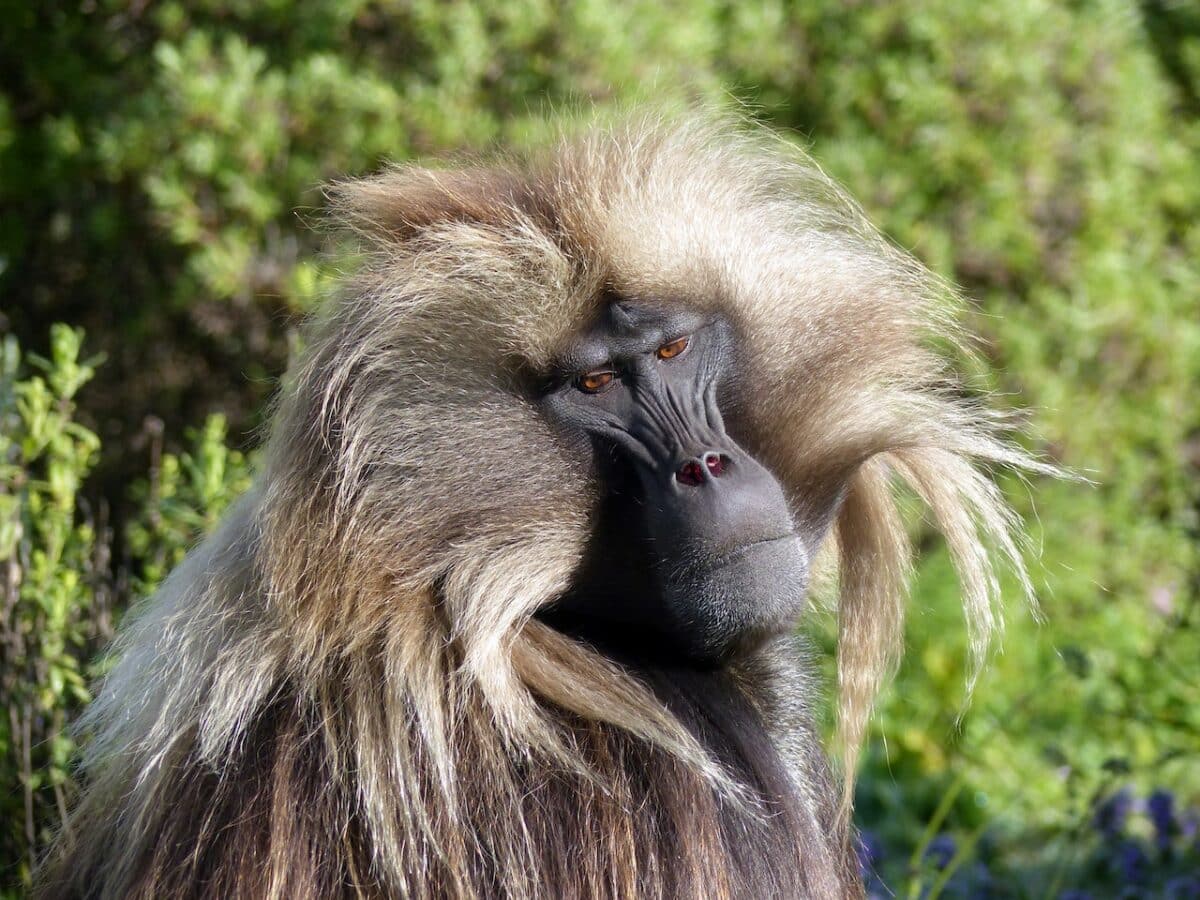
| Key Points |
| Monkeys are a medium-sized, long-tailed member of the primate family. Chimpanzees and apes are not monkeys despite their physical similarity. |
| Humans are descended from apes of a very particular sort, but we are not apes. For instance, we have 98 percent DNA in common with chimpanzees and bonobos. |
| There are generally two distinguished types of monkeys: New world and Old world. New world monkeys have prehensile tails whereas old world monkeys have pouches alongside other diverse looks. |
| Some species of monkeys considered ugly: Bald Uakaris, Proboscis Monkeys, Spider Monkeys, Red-faced Spider Monkey, Tarsier, Chacma Baboons, Gold snub-nosed monkeys, Hamadryas baboon, Stump-tailed Macaque & Crab-eating macaque. |
| Polish researchers investigated whether sharing memes of the proboscis monkey may increase public interest in conservation, which proved successful. |
| The unusual appearances of each of the monkeys on our list that we think are ugly are their greatest assets. These hideous creatures teach us the worth of all living things, including the ugly ones. |
The unusual appearances of each of the monkeys on our list that we think are ugly are their greatest assets. These hideous creatures teach us the worth of all living things, including the ugly ones.
Thank you for reading this article on the ugly monkeys from around the globe! To continue investigate or close relatives, head over to read our post on baby monkeys.
- Magpie Bird Is Reunited with Her Dog Best Friend - April 24, 2024
- Dog Saves Another Dog From Drowning in Fish Pond - April 23, 2024
- Man On Motorbike Rescues Cat From Highway - April 23, 2024

